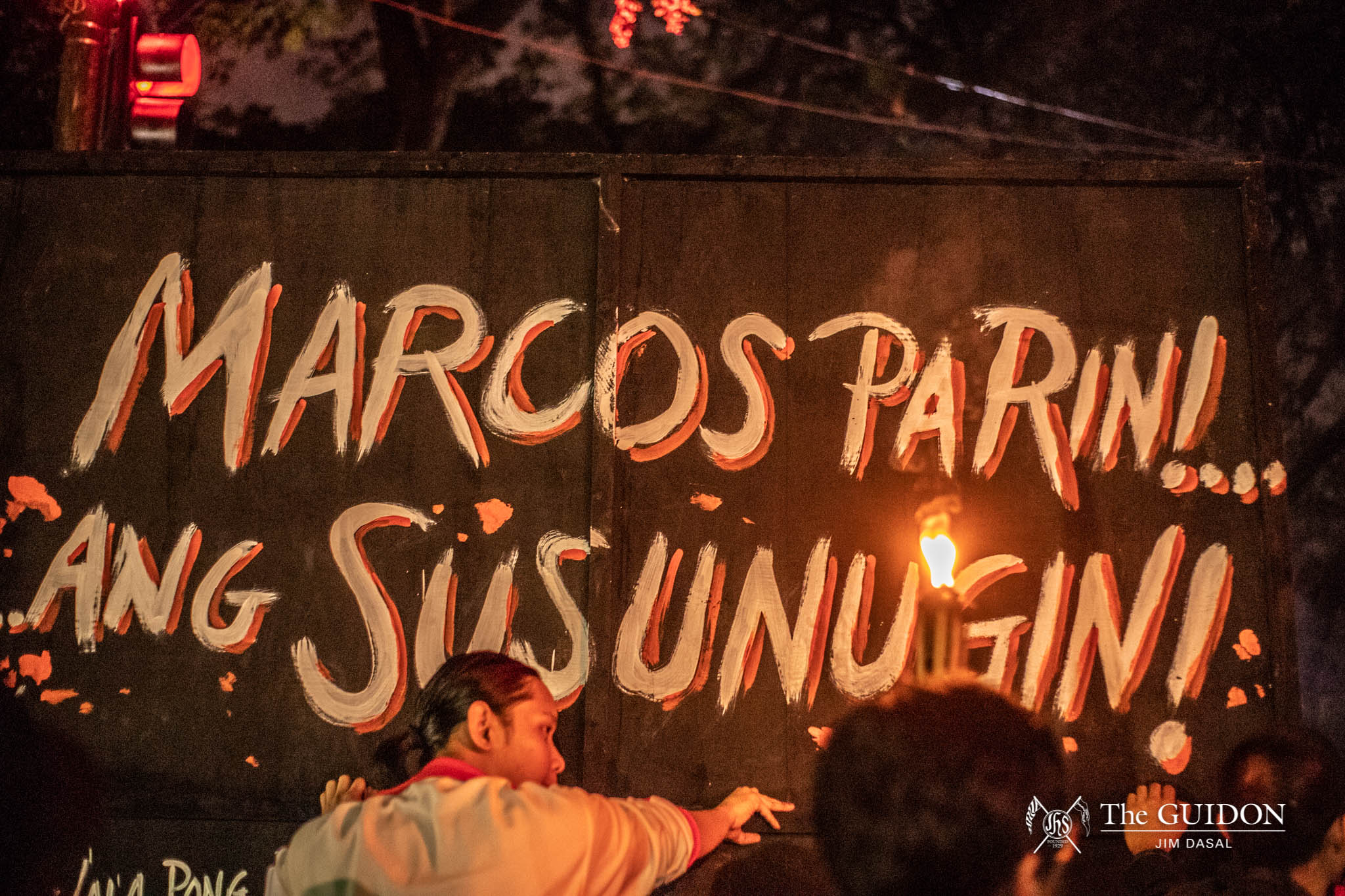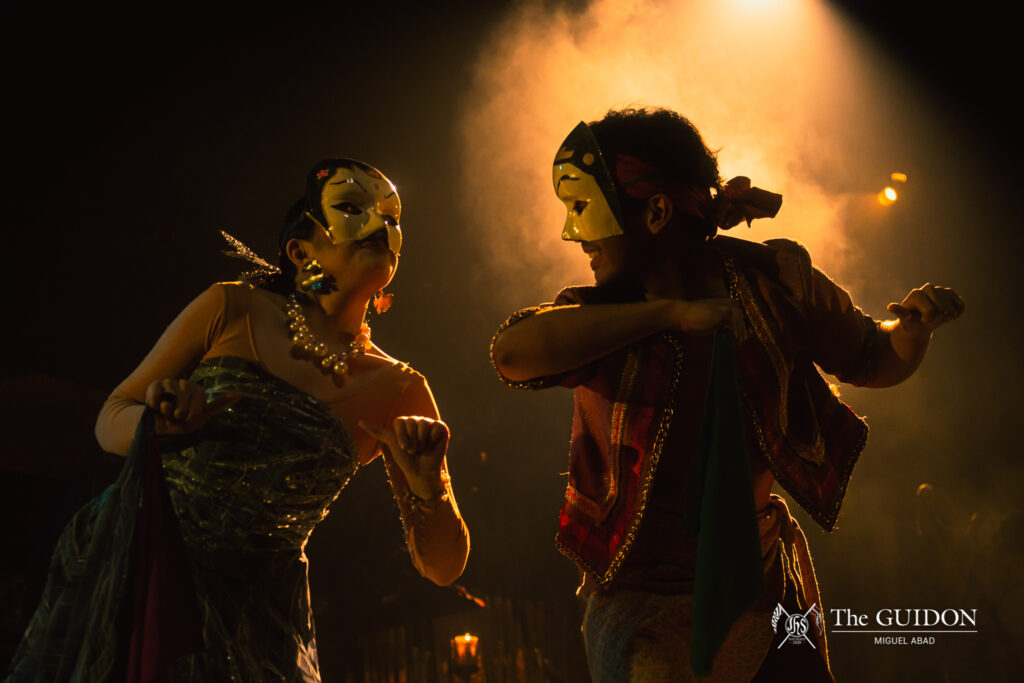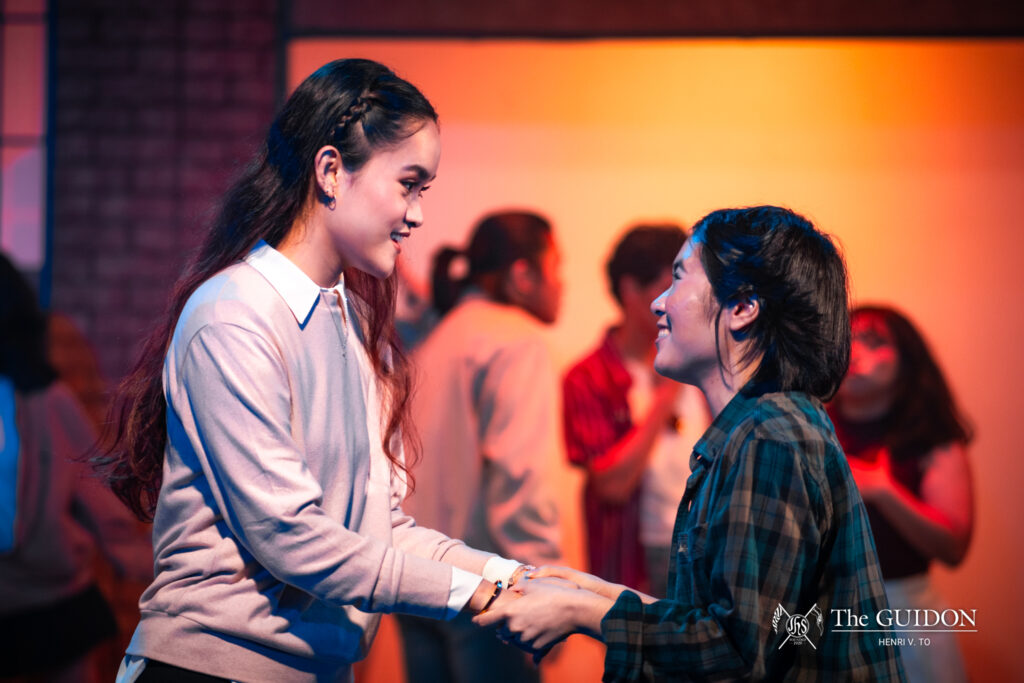For much of our history, the youth have been active in taking to the streets in times of injustice and public outrage. More empowered now than ever, various student groups have made it their mission to mobilize amongst themselves to campaign for better political awareness or fight for the rights of the marginalized. Since the onset of President Rodrigo Duterte’s term, there have been a number of instances necessitating these rallies: late dictator Ferdinand Marcos Sr.’s burial, former Chief Justice Sereno’s ousting, Rappler CEO Maria Ressa’s arrest, and the ongoing war on drugs, among many others.
What happens, though, when artists take to the streets? We take apart the art in protesting: protest art, a nuanced, creative resistance that has been around for decades. In honor of the 33rd anniversary of the People Power Revolution this February 25th, Vantage takes a look at this thriving culture of artists who seek societal change.
Defining the art
Protest art is a broad use of the arts to confront unjust systems and power holders within the context of nonviolent actions, campaigns, and movements.
As the genre of art is rooted in social movements, it is often employed by activists. It comes in many forms: 2D art, 3D art, theater productions, music, literature, dance, and traditional crafts, among others.
“Kung yung art ay nagpapakita ng kalagayan ng lipunan, mas mapapakita mo sa taong apektado na dapat ipaglaban ang ganitong karahasan,” says Luigi Almuena, chairman of UGATLahi Artist Collective, an organization of artists geared towards creative resistance against oppressive social orders.
(If art can show the state of society, artists are able to make it more apparent to the people affected that they should fight against this form of injustice.)
UGATLahi is best known for their effigies (i.e. sculptures or models of people) that are a popular choice of protest art due to its interactivity, as they are typically burned.
In the early 1990s, UGATLahi started the tradition of effigy burning during Joseph Estrada’s term. In 2007, they created an effigy portraying Gloria Macapagal-Arroyo as a vampire, representing her greed. Later in 2011, they crafted Benigno Aquino III’s second effigy, which resembled a giant rotten egg atop a military humvee, among many other iconic effigies.
“Yung protest art, reflection [siya] kung anong klaseng society ang meron. Lagi at laging may struggle, so laging bago ang protest art,” Almuena explains.
(Protest art is a reflection of the kind of society we have. There will always be a struggle, so protest art will always adapt.)
For Karl Castro, artist and instructor under the Department of Fine Arts, protest art is not limited to the works at demonstrations and rallies. “Protest art is a climate of resistance and criticality, a general refusal to accept the world at face value, and an active effort to engage a wider scope of audiences, especially [for] the marginalized who are not usually the intended audience for galleries and performances,” he explains.
Art critic Boris Groy’s 2014 study on art activism in the local scene stresses that artists play a “major role in illuminating, challenging, and critiquing injustices that impact the Philippines.” Castro echoes this sentiment by citing how change begins in the cognitive sphere. “One must first be able to imagine and understand what needs to be done so that one can enact change,” he says.
“As long as it is necessary, protest art will be there to break the silence, confront dominant narratives, fight fascism, and struggle for the dignity of ordinary folk,” he adds.
A brief history of Philippine protest art
According to Castro, protest art has to be critical and explicit as it creates impact that can shake and disturb viewers. “It is daring to speak out, perform, create images that disrupt narratives, condemn injustices, demand dignity, especially when doing so equates, in many cases, certain danger,” he explains.
This is especially evident in the 70s, a time when the emergence of protest art and Social Realist movements in Philippine culture fostered “art that was overly critical of the government and foreign influences.” Protest art was a direct response to then-president and dictator Marcos and his imposition of Martial Law.
As the Marcos regime began to deteriorate, protest art began to flourish. The need for a redefinition of social and racial identity led artists to examine life in the Philippines and incorporate their observations in their art. This encouraged artists to create art that challenged the national conscience.
Castro has observed that the protest art has become more interdisciplinary as compared to the Martial Law era, but works remain very explicit and critical of the injustices experienced by many. The difference now is that there are more platforms, with media and technologies readily available for artists and protesters to access and communicate their causes further than before.
Protest in perspective: Theater
For many, protest art, especially larger pieces that are brought to rallies and mobilizations, are a spectacle. They deliver strong messages visually and creatively, but many still question whether art is an effective medium. However, historian Doreen Fernandez’s 1987 study on theater as a protest platform post-Martial Law highlights the critical potential of the immersive art form. Classic plays like Dekada 70, Desparesidos, and Ang Sistema ni Propesor Tuko, and the more modern stages of The Kundiman Party and Charot! affirm that theater goes beyond entertainment and serves as an arena for political analysis and discourse to this very day.
Filipino Department professor Jerry Respeto, PhD illustrates this belief with his experience in theatre—as a former student of the University of the Philippines Diliman, a member of the Philippine Educational Theater Association (PETA), and an active director of the Ateneo ENTABLADO (ENterteynment para sa TAo, Bayan, LAnsangan at DiyOs).
During Martial Law, Respeto often took part in improvised plays that were staged in order to work around strict censorship laws. “Noong [Martial Law] gumagawa [ang PETA] ng mga dulang iglap, mahigpit ang censorship, lalo na sa dula,” he explains.
(Censorship was strict during the Martial Law years, so we would stage improvised plays.)
These improvised plays were a common avenue to bring theatre to the streets, as it is mobile and can be presented in direct relation to the issues that are discussed during rallies and mobilizations. The platform also helps audiences digest heavy or taboo content through creative dialogue and interpretation.
Though current censorship laws have evolved since the Martial Law period, protest theater still continues to thrive. However, Respeto argues that its execution is very different today. Respeto sees protest theatre as undergoing a restart, adapting to the “newness” of the current administration and is comprised of a mostly-student population.
He adds that the current theatre scene has developed more in terms of production aesthetics and improved technicalities due to the availability of education in theatre. The challenge now is to be able to use that education to publicize the work of sectors and community-based groups, in in the same way organizations like the Concerned Artists of the Philippines, Free the Artist, and the Philippine Educational Theater Association were able to do in the 80s.
The future of protest art
Like most art forms, the future of protest art sees many possible horizons. Respeto specifically calls on creators to take advantage of the thriving environment protest art exists in, rediscover different mediums to present their ideas, and continue to create protest art because it is an instrument of change. “Maging agent for change [ang naglilikha] dahil ito ang panahon na kailangan sila ng bayan,” he says.
(Artists must be agents for change because this is the time that the country needs them the most.)
He adds, “Ang problema ng bayan ay hindi economic o politikal, kundi kultural. Kung mismo ang tao walang pagmamahal sa sariling wika, yun ang kailangang ibalik.”
(The problems the nation faces are not economic or political, but cultural. If the people themselves have no love for their own, that is what must be addressed.)
Nowadays, it seems many artists aim for their art to be interpreted as political. The Atlantic describes this phenomenon as modern art’s “activist spirit,” a recent trend found even in pop culture where artists deliberately and more frequently incorporate elements of activism in their craft.
Despite this, Almuena explains that it’s not enough to intend for art to be political. Artists need the experience to root their art on and this can be achieved through immersion. “Sumama sa mga organization na di lang gumagawa ng art, pero yung mga nag-iintegrate sa masa,” he says. “Dapat malaman nila kung para kanino ang art.”
(Join organizations that don’t just make art, but integrate with the masses. We should know who it is we are making art for.)
In many ways, protest art is far from just expression: It keeps activism dynamic and vibrant as years pass. More than that, it is an evolving art, and the future seems bright for the art form, especially with the youth in tow. From organizing nationwide walk-out protests, to dedicating walls and murals to protest graffiti, it’s proof that the next generation is taking the initiative to keep the movement alive.
Castro’s call for the youth is to go even further beyond what is familiar to them to join the stand against injustice. “Do not be afraid of change,” he says, “do not be afraid.” As the simple but powerful protest chant goes: “Makibaka, huwag matakot!”
(Fight, don’t be afraid!)
Photo by Jim Dasal






